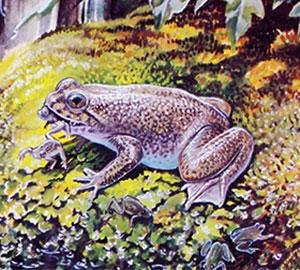Despite what Casper may have suggested, it’s still not possible at this time to resurrect the dead beyond resuscitating someone whose heart stopped. However, scientists have been able to bring back a species of frog that has been extinct since the 1980s through cloning processes and DNA that has been frozen since the 1970s.
The basic premise behind cloning is that cell nuclei are taken from a donor and inserted into eggs from another donor that have had their nuclei removed. These eggs are implanted into a surrogate mother, divide, and, with luck, develop into embryos with the same genetic makeup as the nuclear donor. Embryos rarely survive past a few days, but a few animals have been successfully cloned and developed into functioning organisms. The most famous example was a sheep named Dolly, named so because her DNA was taken from a mammary gland cell, and she lived for six years.

The species in question in this most recent experiment was the gastric-brooding frog, which were native to Queensland, Australia. Mothers in the two species of the genus incubated fertilized eggs in their stomachs and thus gave birth to live young through their mouths. While the Australian researchers who lead this “de-extinction” project, named the Lazarus Project, were only able to produce embryos that survived a few days, these embryos did indeed contain the DNA of the extinct frogs.
A similar project in 2009 temporarily brought back the Pyrenean ibex, a goat native to Spain that became extinct in 2000, and others that may be next include the Tasmanian tiger and the wooly mammoth. Last Friday, TED hosted TEDxDeExtinction, an event that presented what genomic technology can do for potentially bringing extinct species back to life, as well as the ethical issues behind it.
As exciting as this is, it’s important to keep in mind that this isn’t Jurassic Park. The ability to produce fully healthy individuals is difficult due to the varying quality of DNA available and the complications of cloning in general. It certainly isn’t a reason to cast aside preservation efforts in thinking that if we accidentally kill off a species, we can just poof it back into existence, and scientists stress this point. However, these techniques show the potential of regenerating long-extinct organisms.






